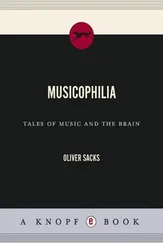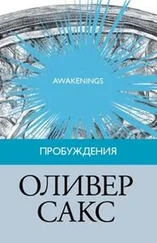… in the preparation of reports on the water supply of Paris, prisons, mesmerism, the adulteration of cider, the site of the public abattoirs, the newly-invented ‘aerostatic machines of Montgolfier’ (balloons), bleaching, tables of specific gravity, hydrometers, the theory of colors, lamps, meteorites, smokeless grates, tapestry making, the engraving of coats-of-arms, paper, fossils, an invalid chair, a water-driven bellows, tartar, sulphur springs, the cultivation of cabbage and rape seed and the oils extracted thence, a tobacco grater, the working of coal mines, white soap, the decomposition of nitre, the manufacture of starch… the storage of fresh water on ships, fixed air, a reported occurrence of oil in spring water… the removal of oil and grease from silks and woollens, the preparation of nitrous ether by distillation, ethers, a reverberatory hearth, a new ink and inkpot to which it was only necessary to add water in order to maintain the supply of ink…, the estimation of alkali in mineral waters, a powder magazine for the Paris Arsenal, the mineralogy of the Pyrenees, wheat and flour, cesspools and the air arising from them, the alleged occurrence of gold in the ashes of plants, arsenic acid, the parting of gold and silver, the base of Epsom salt, the winding of silk, the solution of tin used in dyeing, volcanoes, putrefaction, fire-extinguishing liquids, alloys, the rusting of iron, a proposal to use ‘inflammable air’ in a public firework display (this at the request of the police), coal measures, dephlogisticated marine acid, lamp wicks, the natural history of Corsica, the mephitis of the Paris wells, the alleged solution of gold in nitric acid, the hygrometric properties of soda, the iron and salt works of the Pyrenees, argentiferous lead mines, a new kind of barrel, the manufacture of plate glass, fuels, the conversion of peat into charcoal, the construction of corn mills, the manufacture of sugar, the extraordinary effects of a thunder bolt, the retting of flax, the mineral deposits of France, plated cooking vessels, the formation of water, the coinage, barometers, the respiration of insects, the nutrition of vegetables, the proportion of the components in chemical compounds, vegetation, and many other subjects, far too many to be described here, even in the briefest terms.
Boyle had experimented with the burning of metals a hundred years before, and was well aware that these increased in weight when burned, forming a calx or ash that was heavier than the original. But his explanations of the increase of weight were mechanical, not chemical: he saw it as the absorption of ‘particles of fire.’ Similarly, he saw air itself not in chemical terms, but rather as an elastic fluid of a peculiar sort, used in a sort of mechanical ventilation, to wash the impurities out of the lungs. Findings were not consistent in the century that followed Boyle, partly because the gigantic ‘burning glasses’ used were of such power as to cause some metallic oxides to partly vaporize or sublime, causing losses rather than increases in weight. But even more frequently there was no weighing at all, for analytical chemistry, at this point, was still largely qualitative.
In this same month, Lavoisier got a letter from Scheele describing the preparation of what Scheele called Fire Air (oxygen) admixed with Fixed Air (carbon dioxide), from heating silver carbonate; Scheele had obtained pure Fire Air from mercuric oxide, even before Priestley had. But in the event, Lavoisier claimed the discovery of oxygen for himself and scarcely acknowledged the discoveries of his predecessors, feeling that they did not realize what it was that they had observed.
All this, and the question of what constitutes ‘discovery,’ is explored in the play Oxygen , by Roald Hoffmann and Carl Djerassi.
Replacing the concept of phlogiston with that of oxidation had immediate practical effects. It was now clear, for example, that a burning fuel needed as much air as possible for complete combustion. François-Pierre Argand, a contemporary of Lavoisier’s, was quick to exploit the new theory of combustion, designing a lamp with a flat ribbon wick, bent to fit inside a cylinder, so that air could reach it from both the inside and the outside, and a chimney which produced an updraft. The Argand burner was well established by 1783; there had been no lamp so efficient or so brilliant before.
Lavoisier’s list of elements included the three gases he had named (oxygen, azote [nitrogen], and hydrogen), three nonmetals (sulphur, phosphorus, and carbon), and seventeen metals. It also included muriatic, fluoric, and boracic ‘radicals’ and five ‘earths’: chalk, magnesia, baryta, alumina, and silica. These radicals and earths, he divined, were compounds containing new elements, which he thought would soon be obtained (all of them were indeed obtained by 1825, except fluorine, which defeated isolation for another sixty years). His final two ‘elements’ were Light and Heat – as if he had not been wholly able to free himself from the specter of phlogiston.
More than fifty years later (for my sixty-fifth birthday), I was able to gratify this boyhood fantasy, and had, besides the normal helium balloons, a few xenon balloons of astonishing density – as near to ‘lead balloons’ as could be (tungsten hexafluoride, though denser, would have been too dangerous to use – it is hydrolyzed by moist air, producing hydrofluoric acid). If one twirled these xenon balloons in one’s hand, then stopped, the heavy gas, by its own momentum, would continue rotating for a minute, almost as if it were a liquid.
While Cavendish was the first to observe that hydrogen and oxygen, when exploded together, created water, he interpreted their reaction in terms of phlogiston theory. Lavoisier, hearing of Cavendish’s work, repeated the experiment, reinterpreting the results correctly, and claimed the discovery for himself, making no acknowledgment of Cavendish. Cavendish was unmoved by this, being wholly indifferent to matters of priority and, indeed, to all matters merely human or emotional.
While Boyle and Priestley and Davy were all eminently human and engaging, as well as scientifically brilliant, Cavendish was quite a different figure. The range of his achievements was astounding, from his discovery of hydrogen and his beautiful researches on heat and electricity to his famous (and remarkably accurate) weighing of the earth. No less astounding, and even in his lifetime the stuff of legend, was his virtual isolation (he rarely spoke to anyone, and insisted his servants communicate with him in writing), his indifference to fame and fortune (though he was the grandson of a duke, and for much of his life the richest man in England), and his ingenuousness and incomprehension in regard to all human relationships. I was deeply moved, but if anything more mystified, when I read more about him.
He did not love; he did not hate; he did not hope; he did not fear; he did not worship as others do [wrote his biographer George Wilson in 1851]. He separated himself from his fellow men, and apparently from God. There was nothing earnest, enthusiastic, heroic, or chivalrous in his nature, and as little was there anything mean, grovelling, or ignoble. He was almost passionless. All that needed for its apprehension more than the pure intellect, or required the exercise of fancy, imagination, affection, or faith, was distasteful to Cavendish. An intellectual head thinking, a pair of wonderfully acute eyes observing, and a pair of very skilful hands experimenting or recording, are all that I realise in reading his memorials. His brain seems to have been but a calculating engine; his eyes inlets of vision, not fountains of tears; his hands instruments of manipulation which never trembled with emotion, or were clasped together in adoration, thanksgiving or despair; his heart only an anatomical organ, necessary for the circulation of the blood…
Читать дальше












